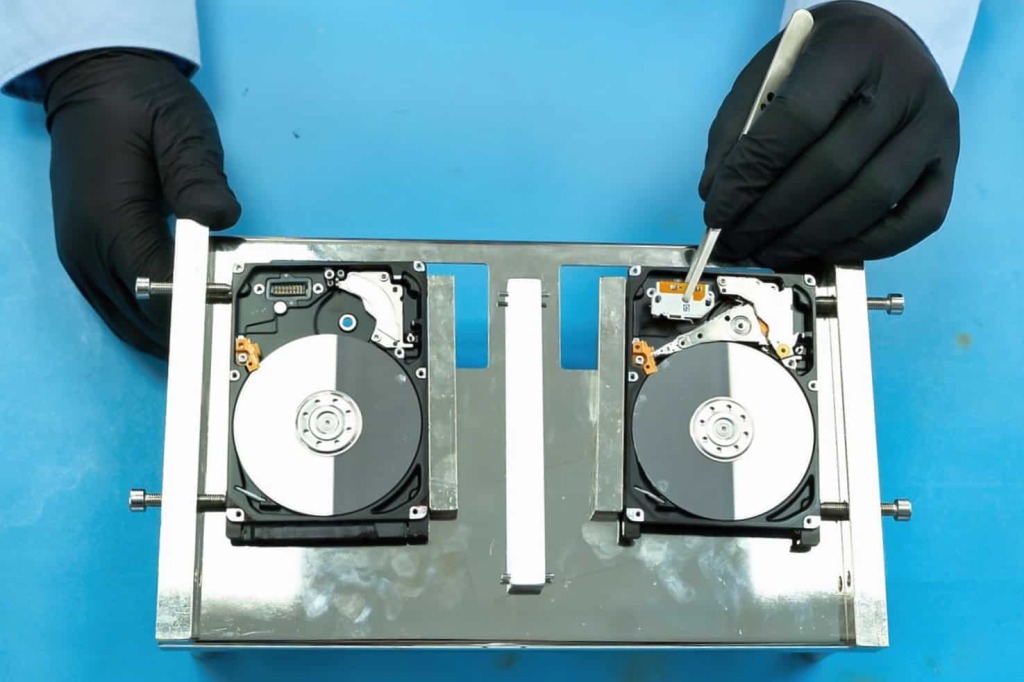
In today’s digital world, we store more valuable data than ever before. From treasured family photographs to critical business documents, our personal and professional lives are tied to the health of our storage devices. But when disaster strikes—whether through accidental deletion, hardware failure, or corruption—the solution often lies in a professional data recovery service. While both hard disk drives (HDDs) and solid-state drives (SSDs) store your files, their internal technology and recovery challenges are very different. Understanding these differences can help you make informed decisions and improve your chances of getting your data back.
The Fundamentals: How HDDs and SSDs Work
HDDs have been around for decades. They store data on spinning magnetic platters, with a read/write head moving mechanically to access the information. Think of them as record players for digital data. They tend to fail because of mechanical wear, head crashes, or platter damage, especially after years of use.
SSDs, on the other hand, store data on interconnected flash memory chips. With no moving parts, they are faster, quieter, and more resistant to physical shock than HDDs. However, they have their own weaknesses—such as wear on memory cells over time and sudden failure due to firmware corruption or power surges.
Because of these structural differences, recovering data from HDDs and SSDs involves different techniques, tools, and expertise.
Common Causes of Data Loss
No matter the drive type, there are a few common scenarios that lead to the need for data recovery:
- Accidental deletion – Files are removed from the system, sometimes even bypassing the recycle bin.
- Drive failure – Mechanical or electronic components fail, preventing access to data.
- File system corruption – Caused by improper shutdowns, malware, or software errors.
- Firmware problems – Particularly common with SSDs, where a glitch in the controller prevents normal access.
- Physical damage – Drops, spills, or extreme temperatures can severely damage the storage media.
HDD Data Recovery: Mechanical Precision Meets Digital Forensics
Recovering data from HDDs often requires addressing physical problems first. For example:
- Head crashes may require replacing the read/write head in a cleanroom environment.
- Motor failure might necessitate transplanting the platters into a new enclosure.
- Surface damage can require specialized imaging tools to read undamaged sectors and reconstruct files.
Once the drive is stable enough to read, specialists use advanced software to extract recoverable data. Because HDDs store information in magnetic form, even partially damaged sectors can sometimes be salvaged.
Key challenge: HDD recovery is highly sensitive to contamination—dust or static electricity can permanently damage platters. This is why at-home repairs often make matters worse.
SSD Data Recovery: A More Complex Digital Puzzle
SSDs are trickier in different ways. Since they have no moving parts, physical failures are rare compared to HDDs. Instead, the main obstacles are:
- Controller chip failure – The “brain” of the SSD becomes unreadable.
- NAND degradation – Memory cells wear out after many write cycles (read more about this).
- Encryption – Many SSDs encrypt data by default (source), which can make recovery impossible without the correct keys.
- Firmware corruption – A bad update or power loss during write operations can corrupt the drive’s internal mapping tables.
Specialized hardware is often required to access NAND chips directly, bypassing the controller entirely. This process, known as “chip-off” recovery, involves reading raw data and reconstructing it—a time-consuming task that requires technical expertise.
Key challenge: SSD recovery is often an all-or-nothing process. Unlike HDDs, where partial recovery is common, SSDs may be inaccessible entirely if the controller fails or the encryption keys are lost.
Why Professional Data Recovery Matters
While it’s tempting to try free software tools or DIY fixes, professional recovery services have significant advantages:
- Specialized cleanroom facilities – For safe mechanical repairs.
- Proprietary tools – Designed to access and interpret data structures unique to each drive model.
- Experience with firmware – Professionals understand how to repair or bypass firmware issues.
- Higher success rates – Especially in cases where hardware failure is involved.
Attempting recovery yourself—particularly opening a hard drive or tampering with SSD chips—can reduce the chances of success. Even simple actions like repeatedly powering on a failing drive can cause further damage.
Preventing Future Data Loss
Once you’ve gone through the stress of losing files, prevention becomes a priority. Here are some best practices:
- Maintain backups – Use the 3-2-1 rule: 3 copies of your data, on 2 different media, with 1 stored offsite.
- Monitor drive health – Software like CrystalDiskInfo can alert you to early signs of failure.
- Avoid sudden power loss – Use surge protectors or an uninterruptible power supply (UPS).
- Keep firmware updated – But only from trusted sources and after confirming compatibility.
- Handle drives carefully – Especially HDDs, which are more vulnerable to shocks.
The Cost of Data Recovery
The price of data recovery varies depending on the drive type, the severity of damage, and the amount of data. HDD recovery may range from straightforward software solutions for logical issues to expensive cleanroom repairs for mechanical failures. SSD recovery costs can be higher for complex chip-level work, particularly when encryption or proprietary controllers are involved.
It’s worth weighing the value of the lost data against the potential cost of recovery. For irreplaceable personal or business data, professional recovery is often the only viable option.
Choosing the Right Data Recovery Service
Not all recovery companies are equal. Look for:
- A proven track record with both HDDs and SSDs.
- No data, no fee policies to minimize risk.
- Clear communication about possible outcomes and costs.
- Certified cleanroom facilities for physical repairs.
- Data confidentiality agreements to protect sensitive information.
Whether you use an HDD or SSD, no storage device is immune to failure. Understanding the differences between the two—and the unique challenges they present—can help you make informed choices when disaster strikes. While there are many tools and guides online, professional data recovery services remain the most reliable way to retrieve lost files from both hard drives and solid-state drives.
The best strategy, however, is prevention: regular backups, proper handling, and ongoing maintenance can save you from the stress and cost of data loss. But if the worst happens, knowing that skilled experts can often bring your files back offers peace of mind in an increasingly digital world.























